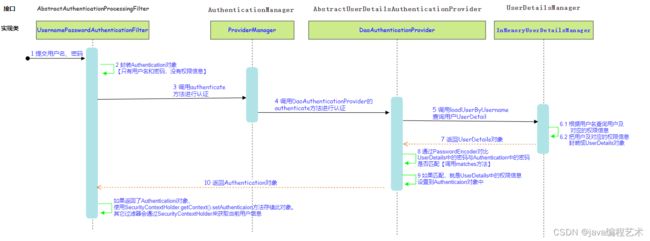- 基于ThinkPHP6用户登录逻辑,结合FastAPI框架实现用户登录系统的全流程解析
Wiktok
pythonfastapi
基于ThinkPHP6用户登录逻辑,结合FastAPI框架实现用户登录系统的全流程解析,涵盖路由配置、数据验证、JWT令牌生成与鉴权、中间件依赖等核心环节:1.路由配置与请求处理路由定义:使用APIRouter组织用户认证相关接口(注册、登录),并通过app.include_router()集成到主应用。例如:#routers/auth.pyfromfastapiimportAPIRouterro
- 如何对关键字段进行脱敏(一)在使用Mybatis-plus执行查询
张瀚元782738120
mybatisjava
为了在读取用户表中的mobile字段时进行脱敏处理,并实现一个通用的方法以便将来对其他字段例如:邮箱、身份证、姓名等进行脱敏处理,可以采用以下步骤:1.添加依赖首先,在pom.xml文件中添加必要的依赖,包括SpringBoot、MyBatis-Plus和Hutool工具库:org.springframework.bootspring-boot-starter-webcom.baomidoumyb
- 【SpringBoot】MorningBox小程序的完整后端接口文档
爱因斯坦乐
springboot小程序java
以下是「晨光宅配」小程序的完整接口文档,涵盖了所有12个表的接口。每个接口包括请求方法、URL、请求参数、响应格式和示例接口文档1.用户模块1.1获取用户信息URL:/user/{userId}方法:GET请求参数:userId(路径参数):用户ID响应格式:{"userId":1,"openid":"openid_123456","phone":"13800138000","nickname":
- 在 Spring Boot 结合 MyBatis 的项目中,实现字段脱敏(如手机号、身份证号、银行卡号等敏感信息的部分隐藏)可以通过以下方案实现
冷冷清清中的风风火火
笔记springbootspringbootmybatis后端
在SpringBoot结合MyBatis的项目中,实现字段脱敏(如手机号、身份证号、银行卡号等敏感信息的部分隐藏)可以通过以下方案实现。以下是分步说明和完整代码示例:一、实现方案选择1.方案一:自定义注解+Jackson序列化脱敏适用场景:数据返回给前端时动态脱敏,数据库存储原始数据。优点:无侵入性,通过注解灵活控制脱敏字段,与业务逻辑解耦。核心实现:利用Jackson的JsonSerialize
- 5、Spring Boot 3.x 集成 RabbitMQ
Kenny.志
java-rabbitmqspringbootrabbitmq
一、前言本篇主要是围绕着SpringBoot3.x与RabbitMQ的集成,这边文章比较简单,RabbitMQ的集成没有太大的变化,这篇文章主要是为了后续的RabbitMQ的动态配置做铺垫。1、Docker安装RabbitMQ2、SpringBoot3.x集成RabbitMQ二、Docker安装RabbitMQ1、创建docker-network#创建docker网络,方便后续连通多个容器dock
- github如何为开源项目作出贡献
PXM的算法星球
github开源
就在昨天,笔者取得了第一次开源项目贡献,虽然更新的内容很小,但是也算是迈出了第一步1.选择合适的开源项目(1)兴趣优先选择自己感兴趣的项目会更有动力参与,比如你喜欢前端开发,可以关注React、Vue相关的开源项目;如果喜欢后端,可以尝试贡献Django、SpringBoot等项目。(2)关注活跃度一个活跃的开源项目通常意味着更快的反馈和更友好的开发者社区。你可以通过以下方式判断:Issue更新频
- 测试工程师Ai应用实战指南简例prompt
进击的雷神
prompt
阅读原文以下是一个真实具体的案例,展示测试工程师如何在不同阶段结合DeepSeek提升效率。案例基于电商平台"订单超时自动关闭"功能测试:案例背景项目名称:电商平台订单系统V2.3测试目标:验证"用户下单后30分钟未支付,订单自动关闭并释放库存"功能技术栈:SpringBoot+MySQL+Redis延迟队列1.需求分析阶段痛点:需求文档仅描述业务逻辑,未明确异常场景(如服务器时间不同步、Redi
- Spring Boot 3.2+ 升级Mybatis-Plus 3.5.x 兼容性问题与解决方案Invalid value type for attribute ‘factoryBeanObjectT
z2637305611
springbootmybatis后端
一、当升级遭遇滑铁卢当我们将SpringBoot升级到3.2.0+版本时,熟悉的Invalidvaluetypeforattribute'factoryBeanObjectType':java.lang.String错误突然吞噬了控制台。这个看似神秘的错误频繁出现在整合Mybatis-Plus3.5.x时,甚至会附赠Invalidbeandefinitionwithname'xxxMapper'的
- 如何编写一个Spring Boot Starter
一口酥Hac
javaspringboot后端javamaven
文章目录概要创建一个SpringBootStarter的步骤创建一个Maven项目打包并发布在其他项目中使用总结概要写一个SpringBootStarter其实就是封装一部分功能,方便其他项目引入和使用。Starter是SpringBoot提供的一种机制,目的是为了简化配置和模块化开发。一般来说,SpringBootStarter会封装一个特定的功能模块,并自动配置一些常用的组件。通过写一个Sta
- Spring Boot 集成 Kafka 消息发送方案
weixin_43833540
springbootkafka
一、引言在SpringBoot项目中,Kafka是常用的消息队列,可实现高效的消息传递。本文介绍三种在SpringBoot中使用Kafka发送消息的方式,分析各自优缺点,并给出对应的pom.xml依赖。二、依赖引入在pom.xml中添加以下依赖:org.springframework.kafkaspring-kafka3.0.8org.jsonjson20231013若要进行测试,可添加sprin
- struts1+struts2项目兼容升级到了spring boot 2.7
和稀泥
strutsspringbootjava
原项目比较复杂,集成了各种框架(struts1struts2spring3等),趁工作之余练练手,学习一下springboot。大概花了一周时间才调通。一、调整jar版本,寻找合适的版本。第一步、首先原项目JDK6,要用springbootJDK肯定要升级了。原来的struts2也有漏洞了,也要升级。在不升级其他框架的情况下。jdk2117都可以运行,索性选择jdk21,反正是练手。第二步、str
- 【业务场景实战】JWT实现用户登录
仰望-星空~~
java
在我们平时登录注册的过程中,我们的信息都会由浏览器发送给后端进行处理,然后再插入到数据库中,下次我们进行登录的时候,只需要输入用户名和密码就可以登录成功进入网站进行操作了。但个人信息暴露在大众面前这是极其不安全的,对于我们的隐私,我们并不希望被别人知道。所以我们在登录的时候,浏览器中进行传递的数据有些是会脱敏、有些是需要进行加密之后才能进行传递的。一、JWT简介JWT(全称JSONWEBToken
- 使用Spring Boot实现分布式任务调度
weixin_836869520
springboot分布式后端
使用SpringBoot实现分布式任务调度大家好,我是微赚淘客系统3.0的小编,是个冬天不穿秋裤,天冷也要风度的程序猿!一、SpringBoot与分布式任务调度概述在分布式系统中,任务调度是一项关键的技术,它能够有效地管理和调度系统中的各种任务,确保任务能够按时执行并具有高可用性和可靠性。SpringBoot作为Java领域流行的开发框架,提供了多种实现分布式任务调度的解决方案。二、SpringB
- 在Spring Boot中实现分布式任务调度
微赚淘客系统开发者
springboot分布式后端
在SpringBoot中实现分布式任务调度大家好,我是微赚淘客系统3.0的小编,也是冬天不穿秋裤,天冷也要风度的程序猿!使用SpringBoot与Quartz实现分布式任务调度1.引入依赖在SpringBoot项目中,首先需要引入Quartz和相关依赖:org.springframework.bootspring-boot-starter-quartz2.配置Quartz在SpringBoot的配
- springboot自定义封装线程池工具类
k&p
Javaspringbootjavaspring
1.首先配置线程池的配置文件,在此处定义线程池的核心线程数等核心参数:/***核心线程数=cpu核心数+1*/privatefinalintcore=Runtime.getRuntime().availableProcessors()+1;@AutowiredprivateThreadPoolPropertiesthreadPoolProperties;@Bean(name="threadPool
- Springboot List集合的校验方式
johnrui
springbootlist后端
pom.xml引入org.hibernate.validatorhibernate-validator6.2.0.Finalorg.springframework.bootspring-boot-starter-validation校验实体类注解@Data@NoArgsConstructor@AllArgsConstructor@JsonIgnoreProperties(ignoreUnknown
- 在Spring Boot中集成分布式任务调度
微赚淘客机器人开发者联盟@聚娃科技
springboot分布式后端
在SpringBoot中集成分布式任务调度大家好,我是微赚淘客系统3.0的小编,也是冬天不穿秋裤,天冷也要风度的程序猿!1.引言分布式任务调度是现代企业应用中常见的需求,特别是在微服务架构中,不同服务可能需要定时执行任务、定时触发某些业务逻辑或者周期性地处理数据。SpringBoot提供了多种方式来实现分布式任务调度,包括使用Quartz、Spring自带的任务调度以及集成第三方调度中心等。2.使
- 基于Spring Boot的分布式任务调度实践
Blossom.118
分布式系统与高性能计算领域wpfspringbootjava后端分布式spring开发语言
在现代的分布式系统中,任务调度是一个常见的需求。无论是定时任务的执行,还是根据业务逻辑动态触发的任务,都需要一个高效、可靠的调度框架来管理。SpringBoot作为目前最流行的Java开发框架之一,提供了强大的依赖管理和快速开发的能力,结合分布式任务调度框架,可以极大地提升开发效率和系统的可维护性。本文将介绍如何基于SpringBoot实现一个分布式任务调度系统,主要涉及Elastic-Job框架
- springboot自定义工具
johnrui
springbootjavaspring
springboot自定义工具上下文工具类上下文工具类你上下文工具类,获取注册的bean。publicclassSpringContextUtilsimplementsApplicationListener{protectedstaticApplicationContextcontext;@OverridepublicvoidonApplicationEvent(ApplicationPrepar
- Spring Boot中定时任务Cron表达式的终极指南
A-Kamen
springboot后端java
SpringBoot中定时任务Cron表达式的终极指南一、Cron表达式基础二、SpringBoot中定时任务的实现三、Cron表达式高级用法四、调试与验证技巧五、常见问题与解决方案六、最佳实践总结定时任务是后端开发中实现周期性业务逻辑的核心技术之一。在SpringBoot生态中,结合@Scheduled注解和Quartz调度框架,开发者可以轻松实现复杂的定时任务。然而,Cron表达式作为定时任务
- TinyMCE插件是否支持Word图片的直接复制与web上传?
2501_90694782
umeditor粘贴wordueditor粘贴wordueditor复制wordueditor上传word图片ueditor导入wordueditor导入pdfueditor导入ppt
要求:开源,免费,技术支持编辑器:TinyMCE前端:vue,vue2-cli,vue3-cli后端:java,jsp,springboot,asp.net,php,asp,.netcore,.netmvc,.netform功能:导入Word,导入Excel,导入PPT(PowerPoint),导入PDF,复制粘贴word,导入微信公众号内容,web截屏平台:Windows,macOS,Linux
- Java复习路线
Code good g
面试准备javamysql数据库
Java复习1、Java基础2、Java多线程3、Javaweb的复习4、MySql复习数据库常用的代码:思维导图:5、计算机组成原理6、网络编程7、Java注解和反射8、计算机网络9、html/css/js10、ssm11、spring12、springmvc13、springboot14、vue15、springcloud16、jvm17、Juc18、mybatis-plus学习19、git2
- springboot poi 后端手撕excel自定义表格。包括插入列表、跨行跨列合并
uutale
java应用springbootexcel后端
文章目录前言一、成品展示二、引入二、RestTemplateConfig三、接收实体ReturnResponse四、WriteExcelTableController总结前言这个程序是因为我需要根据数据库返回的数据生成excel,涉及到跨行跨列合并,表格list填充。填充后调用另一个项目的上传接口,把文件转成字节流传输过去,你们在自己进行使用的时候可以把字节流转成file存到本地。这里的代码有很多
- 【微服务架构】SpringCloud(二):Eureka原理、服务注册、Euraka单独使用
道友老李
架构师进阶-微服务架构#SpringCloud架构微服务springcloud
文章目录SpringCloudEureka原理RegisterRenewFetchRegistryCancelTimeLagCommunicationmechanism服务注册客户端配置选项服务器端配置选项Eureka单独使用Rest服务调用/eureka/status服务状态注册到eureka的服务信息查看注册到eureka的具体的服务查看服务续约更改服务状态删除状态更新删除服务元数据客户端个人
- 【保姆级】阿里云codeup配置Git的CI/CD步骤
CodeCaptain
阿里云GitLabDevOps阿里云gitci/cd
以下是通过阿里云CodeUp的Git仓库进行CI/CD配置的详细步骤,涵盖前端(Vue3)和后端(SpringBoot)项目的自动化打包,并将前端打包结果嵌入到Nginx的Docker镜像中,以及将后端打包的JAR文件拷贝至Docker指定目录的完整流程:前提条件阿里云账号:已注册并登录阿里云CodeUp。项目代码:前端(Vue3)和后端(SpringBoot)项目代码已托管到CodeUp仓库。D
- Java直通车系列46【Spring Cloud】(服务监控与追踪Spring Cloud Sleuth 和 Zipkin)
浪九天
Java直通车javaspring开发语言后端springcloud
目录服务监控与追踪(SpringCloudSleuth和Zipkin)一、为什么需要服务监控与追踪?二、核心工具:SpringCloudSleuth+Zipkin三、场景示例:电商下单调用链追踪场景描述:使用Sleuth+Zipkin的追踪流程:四、高级功能与优化五、适用场景六、总结服务监控与追踪(SpringCloudSleuth和Zipkin)一、为什么需要服务监控与追踪?在微服务架构中,一个
- 深入剖析 Spring Boot 应用上下文 (Application Context):核心概念与实践应用
无眠_
springbootjavarpc
深入剖析SpringBoot应用上下文(ApplicationContext):核心概念与实践应用引言在SpringBoot的世界里,应用上下文(ApplicationContext)扮演着至关重要的角色。它不仅是Spring框架的核心容器,负责管理应用中所有Bean的生命周期和依赖关系,更是SpringBoot应用得以运行的基础环境。理解ApplicationContext的概念、作用和工作原理
- Spring Boot 外部化配置 (Externalized Configuration) 超详解:灵活管理应用配置,打造可移植、可扩展的应用
无眠_
springboot数据库oracle
引言在SpringBoot应用开发中,配置管理是至关重要的环节。不同的环境(开发、测试、生产)通常需要不同的配置参数,例如数据库连接、端口号、日志级别、第三方API密钥等等。SpringBoot外部化配置(ExternalizedConfiguration)提供了一套强大的机制,允许我们将应用的配置从代码中解耦出来,并通过多种外部来源进行灵活管理,从而打造出可移植、可扩展、易于维护的SpringB
- 专利信息管理知识产权基于Spring Boot SSM
QQ1978519681计算机程序
java前端数据库毕业设计计算机毕业设计springboot
目录一、需求分析1.1系统用户角色与权限1.2专利信息管理功能二、数据分析与报表生成三、系统性能与安全性四用户体验与界面设计五扩展性与可维护性六、法律法规与合规性七.技术选型与实现7.1技术选型:7.2实现方式:随着科技的不断发展和知识产权保护意识的提升,专利信息管理系统的需求日益增加。基于SpringBoot的专利信息管理系统旨在提供一个高效、便捷的平台,帮助用户全面管理专利信息。该系统
- Spring Boot 与 Couchbase 整合教程
嘵奇
提升自己springboot后端java
精心整理了最新的面试资料和简历模板,有需要的可以自行获取点击前往百度网盘获取点击前往夸克网盘获取SpringBoot与Couchbase整合教程环境要求JDK8+SpringBoot2.7.xCouchbaseServer7.xMaven/Gradle步骤1:创建SpringBoot项目使用start.spring.io创建项目,添加以下依赖:SpringWeb(可选,用于RESTAPI)Spri
- mysql主从数据同步
林鹤霄
mysql主从数据同步
配置mysql5.5主从服务器(转)
教程开始:一、安装MySQL
说明:在两台MySQL服务器192.168.21.169和192.168.21.168上分别进行如下操作,安装MySQL 5.5.22
二、配置MySQL主服务器(192.168.21.169)mysql -uroot -p &nb
- oracle学习笔记
caoyong
oracle
1、ORACLE的安装
a>、ORACLE的版本
8i,9i : i是internet
10g,11g : grid (网格)
12c : cloud (云计算)
b>、10g不支持win7
&
- 数据库,SQL零基础入门
天子之骄
sql数据库入门基本术语
数据库,SQL零基础入门
做网站肯定离不开数据库,本人之前没怎么具体接触SQL,这几天起早贪黑得各种入门,恶补脑洞。一些具体的知识点,可以让小白不再迷茫的术语,拿来与大家分享。
数据库,永久数据的一个或多个大型结构化集合,通常与更新和查询数据的软件相关
- pom.xml
一炮送你回车库
pom.xml
1、一级元素dependencies是可以被子项目继承的
2、一级元素dependencyManagement是定义该项目群里jar包版本号的,通常和一级元素properties一起使用,既然有继承,也肯定有一级元素modules来定义子元素
3、父项目里的一级元素<modules>
<module>lcas-admin-war</module>
<
- sql查地区省市县
3213213333332132
sqlmysql
-- db_yhm_city
SELECT * FROM db_yhm_city WHERE class_parent_id = 1 -- 海南 class_id = 9 港、奥、台 class_id = 33、34、35
SELECT * FROM db_yhm_city WHERE class_parent_id =169
SELECT d1.cla
- 关于监听器那些让人头疼的事
宝剑锋梅花香
画图板监听器鼠标监听器
本人初学JAVA,对于界面开发我只能说有点蛋疼,用JAVA来做界面的话确实需要一定的耐心(不使用插件,就算使用插件的话也没好多少)既然Java提供了界面开发,老师又要求做,只能硬着头皮上啦。但是监听器还真是个难懂的地方,我是上了几次课才略微搞懂了些。
- JAVA的遍历MAP
darkranger
map
Java Map遍历方式的选择
1. 阐述
对于Java中Map的遍历方式,很多文章都推荐使用entrySet,认为其比keySet的效率高很多。理由是:entrySet方法一次拿到所有key和value的集合;而keySet拿到的只是key的集合,针对每个key,都要去Map中额外查找一次value,从而降低了总体效率。那么实际情况如何呢?
为了解遍历性能的真实差距,包括在遍历ke
- POJ 2312 Battle City 优先多列+bfs
aijuans
搜索
来源:http://poj.org/problem?id=2312
题意:题目背景就是小时候玩的坦克大战,求从起点到终点最少需要多少步。已知S和R是不能走得,E是空的,可以走,B是砖,只有打掉后才可以通过。
思路:很容易看出来这是一道广搜的题目,但是因为走E和走B所需要的时间不一样,因此不能用普通的队列存点。因为对于走B来说,要先打掉砖才能通过,所以我们可以理解为走B需要两步,而走E是指需要1
- Hibernate与Jpa的关系,终于弄懂
avords
javaHibernate数据库jpa
我知道Jpa是一种规范,而Hibernate是它的一种实现。除了Hibernate,还有EclipseLink(曾经的toplink),OpenJPA等可供选择,所以使用Jpa的一个好处是,可以更换实现而不必改动太多代码。
在play中定义Model时,使用的是jpa的annotations,比如javax.persistence.Entity, Table, Column, OneToMany
- 酸爽的console.log
bee1314
console
在前端的开发中,console.log那是开发必备啊,简直直观。通过写小函数,组合大功能。更容易测试。但是在打版本时,就要删除console.log,打完版本进入开发状态又要添加,真不够爽。重复劳动太多。所以可以做些简单地封装,方便开发和上线。
/**
* log.js hufeng
* The safe wrapper for `console.xxx` functions
*
- 哈佛教授:穷人和过于忙碌的人有一个共同思维特质
bijian1013
时间管理励志人生穷人过于忙碌
一个跨学科团队今年完成了一项对资源稀缺状况下人的思维方式的研究,结论是:穷人和过于忙碌的人有一个共同思维特质,即注意力被稀缺资源过分占据,引起认知和判断力的全面下降。这项研究是心理学、行为经济学和政策研究学者协作的典范。
这个研究源于穆来纳森对自己拖延症的憎恨。他7岁从印度移民美国,很快就如鱼得水,哈佛毕业
- other operate
征客丶
OSosx
一、Mac Finder 设置排序方式,预览栏 在显示-》查看显示选项中
二、有时预览显示时,卡死在那,有可能是一些临时文件夹被删除了,如:/private/tmp[有待验证]
--------------------------------------------------------------------
若有其他凝问或文中有错误,请及时向我指出,
我好及时改正,同时也让我们一
- 【Scala五】分析Spark源代码总结的Scala语法三
bit1129
scala
1. If语句作为表达式
val properties = if (jobIdToActiveJob.contains(jobId)) {
jobIdToActiveJob(stage.jobId).properties
} else {
// this stage will be assigned to "default" po
- ZooKeeper 入门
BlueSkator
中间件zk
ZooKeeper是一个高可用的分布式数据管理与系统协调框架。基于对Paxos算法的实现,使该框架保证了分布式环境中数据的强一致性,也正是基于这样的特性,使得ZooKeeper解决很多分布式问题。网上对ZK的应用场景也有不少介绍,本文将结合作者身边的项目例子,系统地对ZK的应用场景进行一个分门归类的介绍。
值得注意的是,ZK并非天生就是为这些应用场景设计的,都是后来众多开发者根据其框架的特性,利
- MySQL取得当前时间的函数是什么 格式化日期的函数是什么
BreakingBad
mysqlDate
取得当前时间用 now() 就行。
在数据库中格式化时间 用DATE_FORMA T(date, format) .
根据格式串format 格式化日期或日期和时间值date,返回结果串。
可用DATE_FORMAT( ) 来格式化DATE 或DATETIME 值,以便得到所希望的格式。根据format字符串格式化date值:
%S, %s 两位数字形式的秒( 00,01,
- 读《研磨设计模式》-代码笔记-组合模式
bylijinnan
java设计模式
声明: 本文只为方便我个人查阅和理解,详细的分析以及源代码请移步 原作者的博客http://chjavach.iteye.com/
import java.util.ArrayList;
import java.util.List;
abstract class Component {
public abstract void printStruct(Str
- 4_JAVA+Oracle面试题(有答案)
chenke
oracle
基础测试题
卷面上不能出现任何的涂写文字,所有的答案要求写在答题纸上,考卷不得带走。
选择题
1、 What will happen when you attempt to compile and run the following code? (3)
public class Static {
static {
int x = 5; // 在static内有效
}
st
- 新一代工作流系统设计目标
comsci
工作算法脚本
用户只需要给工作流系统制定若干个需求,流程系统根据需求,并结合事先输入的组织机构和权限结构,调用若干算法,在流程展示版面上面显示出系统自动生成的流程图,然后由用户根据实际情况对该流程图进行微调,直到满意为止,流程在运行过程中,系统和用户可以根据情况对流程进行实时的调整,包括拓扑结构的调整,权限的调整,内置脚本的调整。。。。。
在这个设计中,最难的地方是系统根据什么来生成流
- oracle 行链接与行迁移
daizj
oracle行迁移
表里的一行对于一个数据块太大的情况有二种(一行在一个数据块里放不下)
第一种情况:
INSERT的时候,INSERT时候行的大小就超一个块的大小。Oracle把这行的数据存储在一连串的数据块里(Oracle Stores the data for the row in a chain of data blocks),这种情况称为行链接(Row Chain),一般不可避免(除非使用更大的数据
- [JShop]开源电子商务系统jshop的系统缓存实现
dinguangx
jshop电子商务
前言
jeeshop中通过SystemManager管理了大量的缓存数据,来提升系统的性能,但这些缓存数据全部都是存放于内存中的,无法满足特定场景的数据更新(如集群环境)。JShop对jeeshop的缓存机制进行了扩展,提供CacheProvider来辅助SystemManager管理这些缓存数据,通过CacheProvider,可以把缓存存放在内存,ehcache,redis,memcache
- 初三全学年难记忆单词
dcj3sjt126com
englishword
several 儿子;若干
shelf 架子
knowledge 知识;学问
librarian 图书管理员
abroad 到国外,在国外
surf 冲浪
wave 浪;波浪
twice 两次;两倍
describe 描写;叙述
especially 特别;尤其
attract 吸引
prize 奖品;奖赏
competition 比赛;竞争
event 大事;事件
O
- sphinx实践
dcj3sjt126com
sphinx
安装参考地址:http://briansnelson.com/How_to_install_Sphinx_on_Centos_Server
yum install sphinx
如果失败的话使用下面的方式安装
wget http://sphinxsearch.com/files/sphinx-2.2.9-1.rhel6.x86_64.rpm
yum loca
- JPA之JPQL(三)
frank1234
ormjpaJPQL
1 什么是JPQL
JPQL是Java Persistence Query Language的简称,可以看成是JPA中的HQL, JPQL支持各种复杂查询。
2 检索单个对象
@Test
public void querySingleObject1() {
Query query = em.createQuery("sele
- Remove Duplicates from Sorted Array II
hcx2013
remove
Follow up for "Remove Duplicates":What if duplicates are allowed at most twice?
For example,Given sorted array nums = [1,1,1,2,2,3],
Your function should return length
- Spring4新特性——Groovy Bean定义DSL
jinnianshilongnian
spring 4
Spring4新特性——泛型限定式依赖注入
Spring4新特性——核心容器的其他改进
Spring4新特性——Web开发的增强
Spring4新特性——集成Bean Validation 1.1(JSR-349)到SpringMVC
Spring4新特性——Groovy Bean定义DSL
Spring4新特性——更好的Java泛型操作API
Spring4新
- CentOS安装Mysql5.5
liuxingguome
centos
CentOS下以RPM方式安装MySQL5.5
首先卸载系统自带Mysql:
yum remove mysql mysql-server mysql-libs compat-mysql51
rm -rf /var/lib/mysql
rm /etc/my.cnf
查看是否还有mysql软件:
rpm -qa|grep mysql
去http://dev.mysql.c
- 第14章 工具函数(下)
onestopweb
函数
index.html
<!DOCTYPE html PUBLIC "-//W3C//DTD XHTML 1.0 Transitional//EN" "http://www.w3.org/TR/xhtml1/DTD/xhtml1-transitional.dtd">
<html xmlns="http://www.w3.org/
- POJ 1050
SaraWon
二维数组子矩阵最大和
POJ ACM第1050题的详细描述,请参照
http://acm.pku.edu.cn/JudgeOnline/problem?id=1050
题目意思:
给定包含有正负整型的二维数组,找出所有子矩阵的和的最大值。
如二维数组
0 -2 -7 0
9 2 -6 2
-4 1 -4 1
-1 8 0 -2
中和最大的子矩阵是
9 2
-4 1
-1 8
且最大和是15
- [5]设计模式——单例模式
tsface
java单例设计模式虚拟机
单例模式:保证一个类仅有一个实例,并提供一个访问它的全局访问点
安全的单例模式:
/*
* @(#)Singleton.java 2014-8-1
*
* Copyright 2014 XXXX, Inc. All rights reserved.
*/
package com.fiberhome.singleton;
- Java8全新打造,英语学习supertool
yangshangchuan
javasuperword闭包java8函数式编程
superword是一个Java实现的英文单词分析软件,主要研究英语单词音近形似转化规律、前缀后缀规律、词之间的相似性规律等等。Clean code、Fluent style、Java8 feature: Lambdas, Streams and Functional-style Programming。
升学考试、工作求职、充电提高,都少不了英语的身影,英语对我们来说实在太重要






